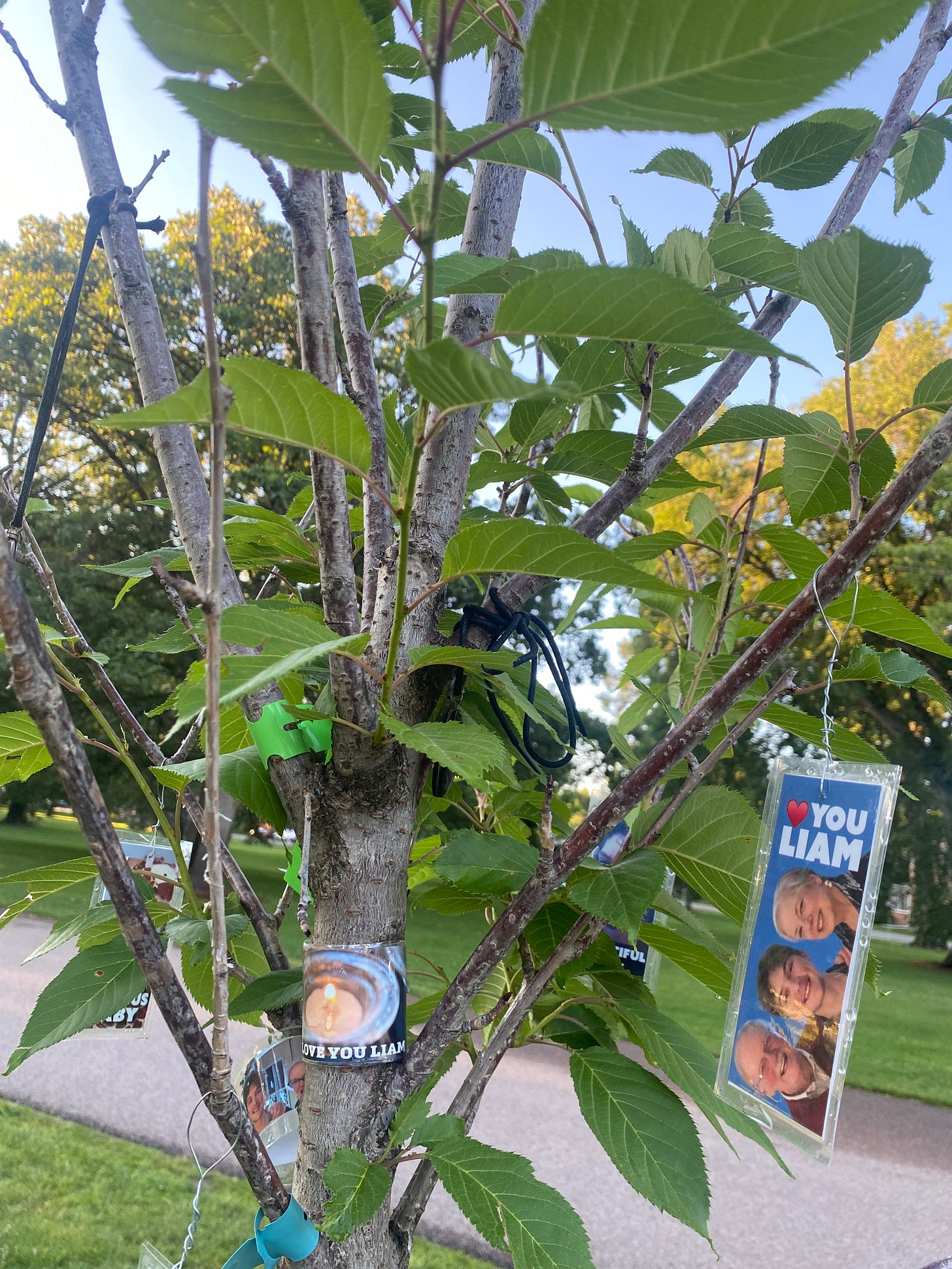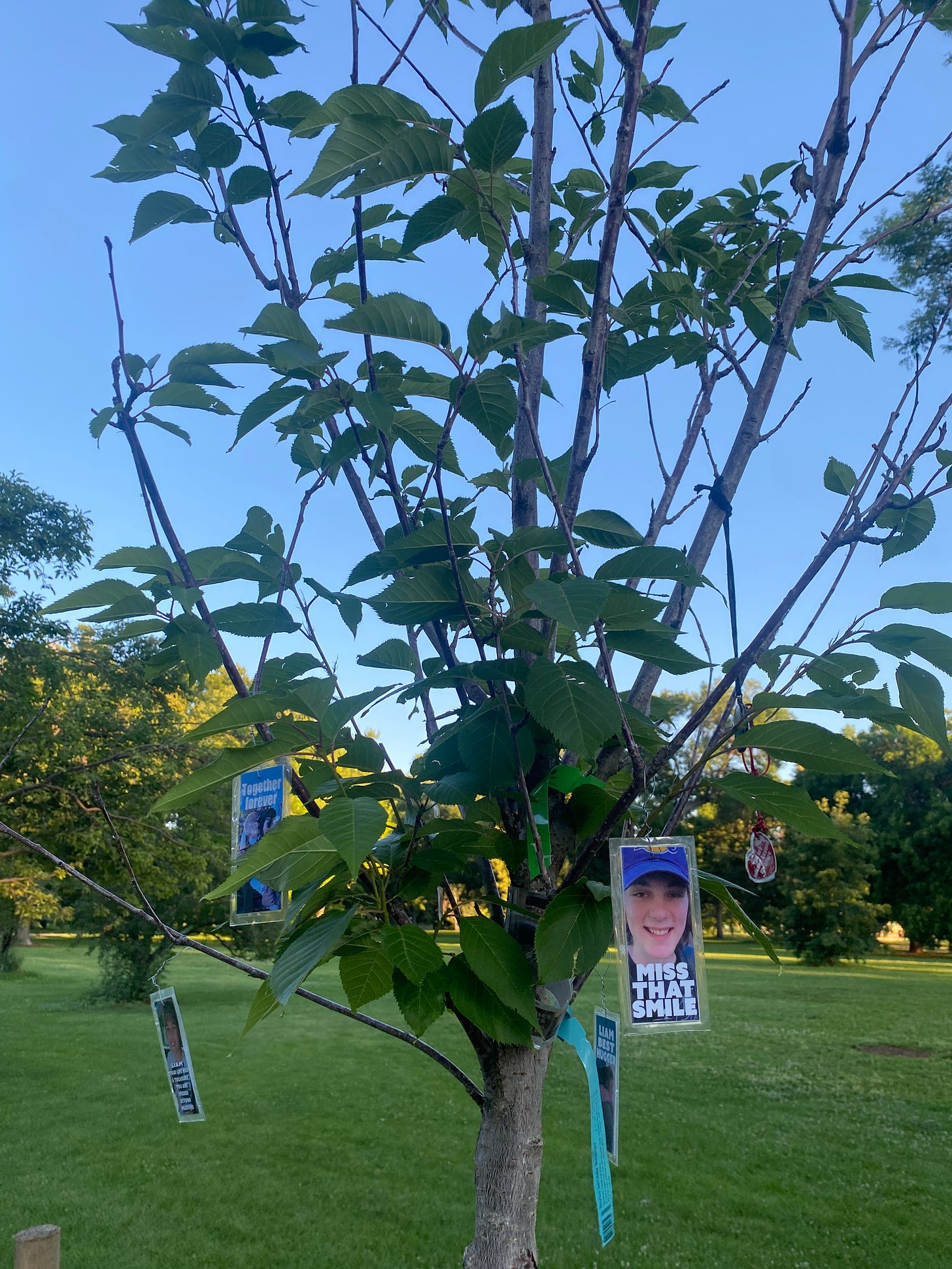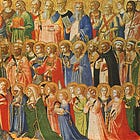I know nearly nothing of trees. Sadly couldn’t tell an elm from an oak. So I can’t say for sure what sort of tree this is that caught my eye yesterday in the blinking dawn of Denver’s City Park. The only term I know that could describe the scrawny limbed newcomer to our park is “sapling”– but that seems maybe too young a word.
What I do know is how yesterday its spindly branches bore ornaments of pain: laminated images of a young man, Liam, bearing messages like your life was a treasure, you are missed beyond measure and Liam – best hugger, and we will always love you.
I found myself placing a hand on my heart for a moment as a way to acknowledge this grief, which is to say, as a way to recognize my own. It happens like that. Once you have known your own sorrow, the sorrow of others seems to loop around you then loop back around to them. Perhaps this is why we cannot, in fact, take in the pain all around us every moment of every day. It can tangle us up in ways that are unsustainable.
But I took notice of Liam’s memorial tree when I walked by it even though I don’t know how many times have I driven past makeshift memorials — made of dingy plastic flowers, exhaust-smudged teddy bears and faded ribbons — marking the unfaded grief of strangers who loved someone who died there. Were I to allow every roadside shrine to break my heart, I’d never manage to show up to where those roads led: dental appointments, errands, meals with friends. There’s only so much of other’s loss we can bear.
But yesterday, I put my hand briefly on my heart. I have had young men I love also die, and I am so sorry.
I cannot say how this young man, Liam, died: by a car, a cancer or a hand (perhaps even his own).
But for the past day I have almost obsessively thought about him and the ones who loved him, wondering what sort of grief led them to decorate a City Park tree with messages to their lost Liam.
All grief is unmistakably particular when it is our own. We need not poke at wounds with the stick of false equivalency: I know how you feel.
The cut edges of my own sorrow will always differ from yours when viewed at close range. But stepping back, way back, the shapes of loss start to favor because they share a common ancestor. From afar it takes the same shape: something or someone was and is no longer: a child, a marriage, a part of the body. We need to say “They were here and they were loved. They were here and they were a pain in the ass and they were hilarious and they were impossible and they were loved”.
My favorite moment in
book, Tiny Beautiful Things is when she responds to someone who doesn’t understand how, after her miscarriage, her boyfriend and everyone else seem to just be living life like nothing really happened. She could not understand why she felt so stuck in her grief while the world resumed its turning. “I know why” Strayed responds, “because everyone else is living on planet: Earth and you are living on planet: My Baby Died”.So to my neighbors living on planet: Liam Died, I do not know you, but I am sending my love. May you, in the words of Etty Hillesum, “Give your sorrow all the space and shelter in yourself that is its due”. Thank you for sharing your grief and your love. I see you.
Related Posts:









As I have just written in my restacked note to this wonderful piece, the tree is a japanese cherry and I am sure that is no accident that Liam's mourners chose this tree (who knows? they may have even gifted it to the Denver Parks Commission themselves) as the blooms - which feature in many japanese still life artworks - are both beautiful and short-lived. Ideal metaphors for human life.
I have lost so many including my best beloved husband, and you have described grief exactly right!!! My tears fall freely for others I don’t know because I understand the despair of their loved ones. My daughter recently had a gravely ill friend (who, happily, seems to be recovering) and was amazed by the ripples through the community that concern about this young lady created. The bonds we feel with one another are actually one of the magical things about being human. Thank you for reminding us of this, Nadia